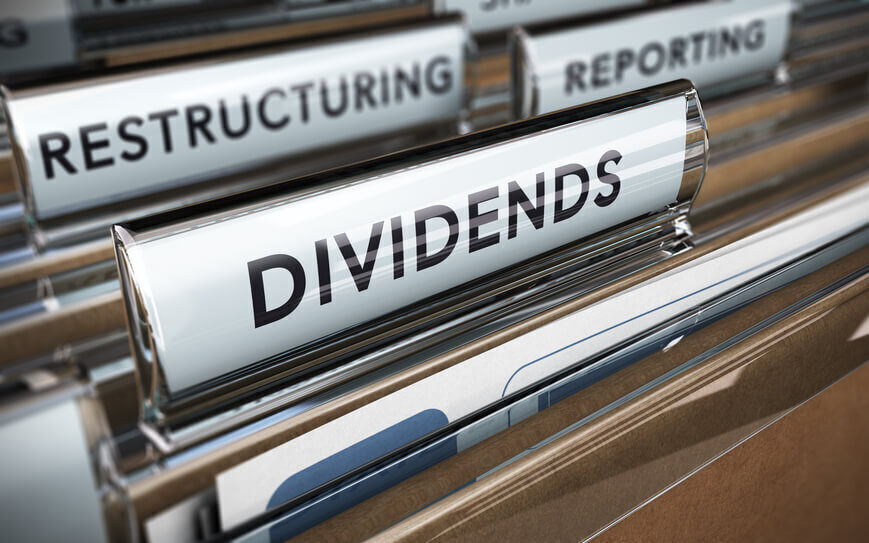I’m what you would call a social butterfly. As my grandmother once told me … I could talk to anyone and make friends instantly.
I was in the grocery store one day, and I met a man named Robert.
He just retired as a college professor up north. Robert and his wife Rhonda moved to Florida to take advantage of the abundant sunshine, the Atlantic Ocean and an excellent overall quality of life.
In talking to Robert, I learned that his retirement dream wasn’t going as well as he expected. Money was tight.
Let’s be honest … Florida isn’t cheap.
He and Rhonda were living off his pension, but it simply wasn’t enough to allow them to take advantage of all that retirement had to offer. He mentioned he hadn’t seen his grandchildren in two years.
It was heartbreaking.
During our conversation, he mentioned investing in dividend stocks to earn more income and help with their situation.
It got me thinking about if this was the best approach. Sure, dividends offer a safety net in consistent payouts, but it’s not as easy as just picking a stock that offers high yields.
And with the Federal Reserve now eyeing additional interest rate cuts, the market for dividend stocks is changing.
Let’s explore some dividend pitfalls to avoid.
The Blind Chase for High Yield
One of the first things to look at when making potential investments is the dividend yield.
This is a simple percentage that shows how much income you earn in dividend payouts for every dollar you invest in the stock. It’s calculated by dividing the annual dividends per share by the price per share.
If you consider a stock trading at $20 per share with a dividend yield of 5%, you can expect a dividend payout of $1 per share per year.
Logic tells us that the higher the dividend yield, the higher the dividend payout.
But you have to look deeper because there may be a nefarious reason behind a high yield.
First, dividends are payments of a percentage of company profits to those who own the stock.
Companies use profits to invest back into the operations of business.
So, if a stock you invest in has a high dividend yield, the company has less money to invest in growth.
A high yield could also signal that management doesn’t see an upside in reinvesting profits and opts for a high dividend instead. That’s not necessarily a good thing for the investor, as growth sustains a solid dividend payout.
High yields can also signal a stock that’s in trouble.
Because the yield is relative to the price of a stock, a high yield could signal the stock has fallen. The company posts a high dividend yield on paper, but it’s because the stock is on the decline and profits are faltering.
Dividend Investing Is Capital-Intensive
Let’s say you are retired, living off your benefits… but those benefits only cover your base expenses (think mortgage, food, gas, etc.).
To live comfortably, you need an additional $1,500 per month… or $18,000 per year after the government takes its cut.
After extensive research (including using the Green Zone Power Ratings system… wink, wink), you find XYZ Inc., which pays a 5% dividend on a stock trading at $10 per share.
The big question is: How much do you need to invest in XYZ Inc. to reach your $1,500-per-month dividend goal?
Follow me here because this is where it gets a little complicated.
Because the government takes a cut of dividends paid out (let’s assume it’s 30%), you actually have to bring in $25,714 in gross dividends each year ($18,000 divided by 0.7).
If you own 100 shares at $10 per share, a 5% dividend would pay you $5.
To reach your monthly dividend goal with a $10 stock paying a 5% dividend yield, you need to invest $517,280 ($25,714 divided by the yield of 0.05).
That’s a ton of capital you’d need to be comfortable in your golden years!
A Brief Note on the Fed and Dividend Yields
In September, the Fed kicked off its first rate-cutting cycle since 2020. It started by cutting its benchmark interest rate by 50 basis points.
And economists and other analysts are pricing in another 25 basis-point cut next week when the Fed conducts its November meeting.
With lower interest rates, companies are more likely to seek cheap financing. That opens the door for high-growth stocks to soar higher as the bull market continues.
You may be worried that lower interest rates translate to lower yields for dividend stocks or worse performance for high-yielding stocks. But that’s not quite the case.
Higher-yielding stocks aren’t as sensitive to market movements, and they can have a negative relationship with fluctuating interest rates. When the Fed trims rates, those higher-yielding stocks can often get a boost.
Of course, not all dividend stocks are the same. If you’re worried about a dividend payer in your portfolio, look out for other red flags I noted above.
Supplement Your Strategy to Reach Your Retirement Goals
Don’t get me wrong; dividend investing can give you a massive leg up in retirement. And there are plenty of fantastic dividend-paying stocks out there.
But, as I showed you, it takes a lot to achieve a significant and sustainable payout.
That’s where mixing in some high-growth stocks that are well-suited for this market environment comes in.
My colleague and Money & Markets Chief Investment Strategist Adam O’Dell is eyeing the market’s next “Super Boom” as three forces converge. I’ve already mentioned one of those forces here (Fed rate cuts), but if you’re wondering about the other two — and how Adam is positioning the Green Zone Fortunes model portfolio to take advantage — click here to view his latest presentation.
He’s pinpointed six stocks that are ideally suited for the coming boom as we head to the close of 2024.
Until next time…
Safe trading,

Matt Clark, CMSA®
Chief Research Analyst, Money & Markets





